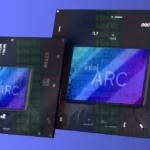Understanding High-sensitivity Terahertz Detection by 2D Plasmons in Transistors
On November 9, 2023, a research group from Tohoku University and RIKEN made a significant breakthrough in terahertz-wave detection. Their development of a high-speed, high-sensitivity terahertz-wave detector operating at room temperature represents a pivotal achievement for next-generation 6G/7G technology.
The Significance of Terahertz Waves
Terahertz (THz) waves, residing within the range of frequencies from 300 gigahertz to 3 THz, are crucial for enhancing current communication speeds. However, the fast and sensitive detection of THz waves at room temperature has proven to be challenging for conventional electronic or photonic-based semiconductor devices.
The Role of Two-dimensional Plasmons
Enter two-dimensional plasmons, which play a critical role in solving the aforementioned challenge. In a semiconductor field-effect transistor, these plasmons are excited states of electrons exhibiting fluid-like behaviors. They offer promising capabilities due to their nonlinear rectification effects and rapid response.
The Breakthrough Discovery
Lead researcher Akira Satou and his team discovered a 3D plasmonic rectification effect in THz wave detection. They based their detector on an indium-phosphide high-electron mobility transistor, enabling a sensitivity enhancement exceeding conventional detectors.
New Detection Method
The research introduced a new detection method that combined the traditional vertical hydrodynamic nonlinear rectification effect of 2D plasmons with the addition of a vertical diode-current nonlinearity. This method effectively resolved waveform distortion caused by multiple reflections of high-speed modulated signals, a critical issue in conventional detectors.
research Team’s Perspective
Akira Satou, accompanied by Specially Appointed Professor Tetsuya Suemitsu and Hiroaki Minamide, expressed confidence in their new detection mechanism, which overcomes most of the bottlenecks in conventional terahertz-wave detectors. They aspire to build on their achievement by improving the device performance in the future.
Conclusion and Future Prospects
Their findings, documented in the journal Nanophotonics, mark a significant step forward in terahertz-wave detection technology. This breakthrough paves the way for the development of next-generation 6G/7G technology and holds promise for revolutionizing communication speeds in the near future.
This remarkable achievement by the research group from Tohoku University and RIKEN brings hope for significant advancements in the field of terahertz-wave detection and its application in the next generation of technology.
Source: phys








No Comments